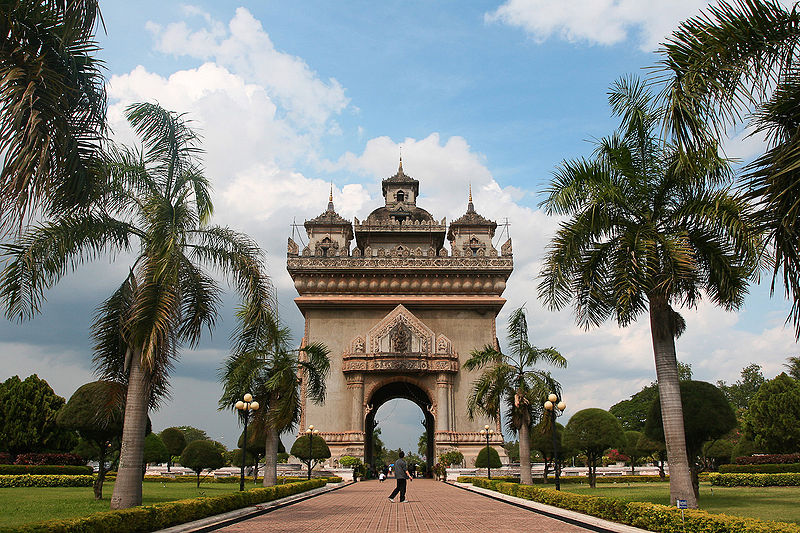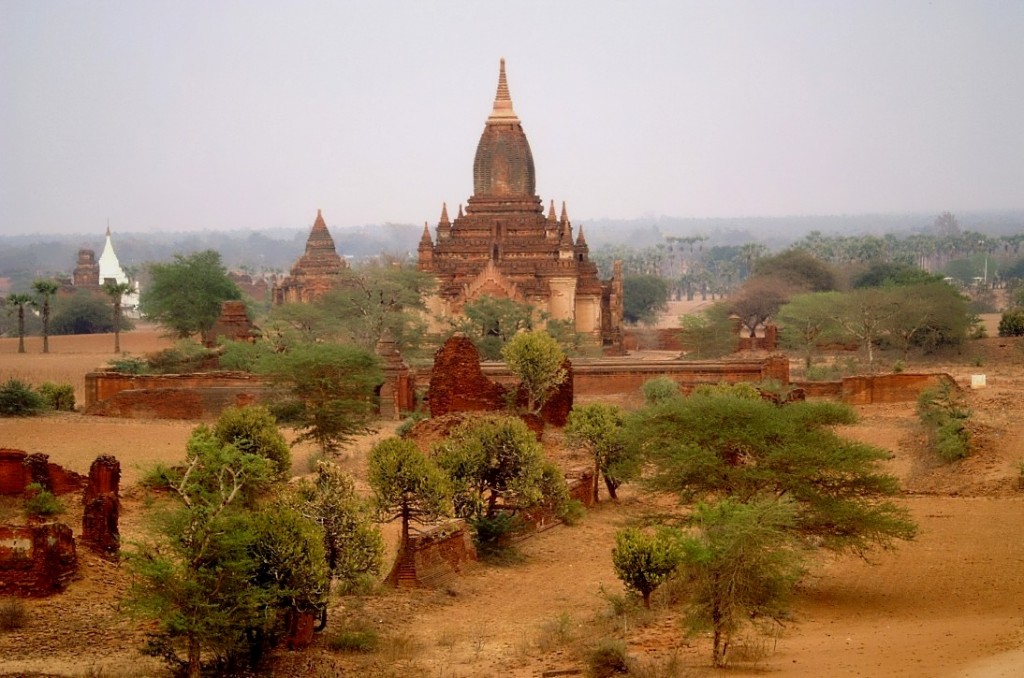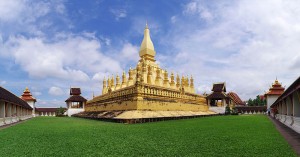
Visiting Vientiane might be first a bit of a shock when arriving from cities like Bangkok or Hanoi – not in terms of traffic or crowds, but more because of its refreshingly laid back atmosphere!
Unlike most of the Southeast Asian capitals, Vientiane remains far away from the atmosphere of an overcrowded city. A population of just close to 800,000 citizens – in comparison to multi-millions in Bangkok for example, speaks for itself.
Besides of the population, what else makes Vientiane different? Due to its size, it is quite easy to do sightseeing and navigate yourself around the city, which is even possible by feet or your own bike.
Let’s dive into a city which still keeps the charme of French colonial times, blended with Southeast Asian hospitality – Vientiane!
09:00 – the Patuxai
A good way to start your cultural trip around Vientiane is to start at the Patuxai. The Patuxai or also known as ‘Victory Gate of Vientiane’ reflects classical neo-renaissance style. It was built in the 1960’s as memorial from the independence of France and resembles the Arc de Triomphe in Paris. The ceiling depicts the Hindu trinity, Brahma, Vishnu and Maheshwara. Walk up the stairs and enjoy the wonderful view over Vientiane.
Open: Daily from 08:00 – 16:30
Entrance fee: 3000 Kip (US$ 0.40) per pseon
Address:
Thannon Lan Xang

10:30 – Pha That Luang
Also known as the ‘Great Stupa’, Pha That Luang is the most sacred monument in Laos and one of the holiest ones for Buddhists; it is believed that Indian missionaries sent by King Ashok around the 3rd century brought a breastbone of Buddha to Vientiane.
Open: Daily from 08:00-12:00 and 13:00-16:00
Entrance fee: 5000 Kip per person
Address:
That Luang
12:30 – Lunch
One of the remaining legacies the French left behind: baguettes! Toasted baguettes can be found from markets to local restaurants with a variety of stuffings suiting every taste; chicken, cheese, vegetarian or seafood-style. Other delicious meals include:
Tam Mak (papaya salad, similar to its Thai version, Som Tam)
Laap (chopped meat with uncooked rice grain and vegetables)
Yall Dib (spring rolls)

15:00 – A visit to COPE
The COPE centre has been established to support victims of mine accidents with rehabilitation and prosthetic devices. It is a non-profit organization situated in the heart of Vientiane and easily reachable via tuk tuk. It has a visitor centre which serves as an interactive museum, explaining the history of the US attacks from the late 1960’s to 1970’s and how Laotians live now on the still-affected war sites in Laos.
Insider tip: try a delicious Coffee Lao at the adjacent coffee shop – it does not only taste great, but the profit goes 100% as donation to the centre for further support.
Open: Daily from 09:00 – 18:00
Entrance fee: FREE
Address:
Boulevard Khouvieng
www.copelaos.org
18:00 – Take a walk along the Mekong promenade
The new promenade is very popular among locals and tourists. Just stroll around or even join one of the aerobic and tai-chi classes. Just located parallel, the Vientiane Night Market provides local crafts, souvenirs and clothes.
Have dinner at one of the numerous restaurants located near the promenade, completing your cultural day in Vientiane.













